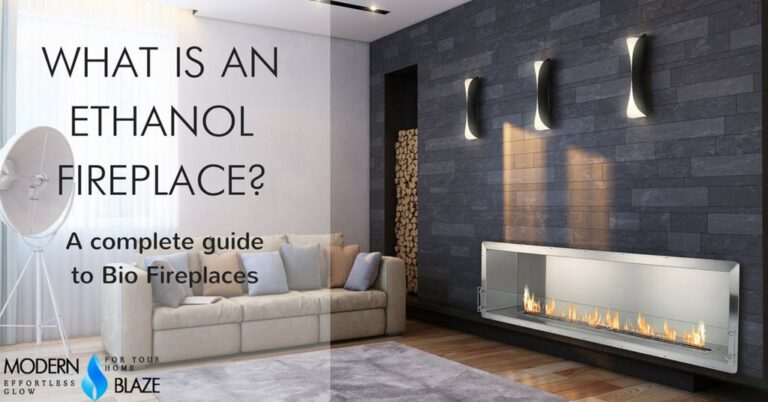
In today’s time, there are a lot of alternatives of traditional fireplaces. Bioethanol fireplace is one of them and one of the most interesting. Here we will try to cover everything you need to know about ethanol fireplaces: the definition of ethanol fireplaces, how they work, what fuel they use, how to install them and how much do it cost to operate and fix them.
Modern fireplaces are way more efficient, eco-friendly, easier to take care of, and what is more important they are way more affordable. In case you don’t want to mess with wood chopping, ash cleaning, smoke, and smell you may have to consider these options:
- Gas Fireplaces
- Electric Fireplaces
- Ethanol (Bio-ethanol) Fireplaces
You probably have heard about gas and electric fireplaces. The latter two types, which are ethanol and gel fireplaces, are relatively new and not everybody knows what they are about. Let’s learn a little bit about these innovative, eco-friendly fireplaces in your home.
The Definition of Ethanol Fireplaces
A so called ethanol-fireplaces (also on bio-ethanol fireplace, ethanol fireplace) is a the type of fireplace which has combined zones generation of heat and technological process — combustion of fuel (a.k.a denatured alcohol). This kind of fireplace does not require any additional stuff such as a chimney and gives a real flame which is not imitation. You can install it in any room.
To make it all clear, an ethanol fireplace is a fireplace with no ventilators and it runs on clean-burning ethanol fuel. This fuel is based on alcohol, it creates real flames, and produces absolutely no smoke, smell or dangerous chemicals when burning, which is why ethanol fireplaces do not require any special chimney, vent or flue and can be installed virtually anywhere.